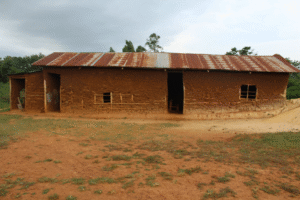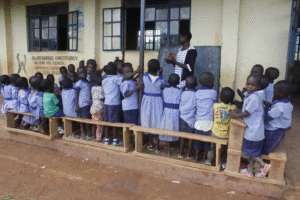From mud walls to a thriving learning environment in Kenya
In the quiet village of Mukemo, in Busia County in Kenya, young children once began their school days seated on cold, bare ground inside a crumbling mud-walled classroom. The structure had worn-out iron sheets for roofing and no proper flooring. During rainy seasons, water would flood the classroom, hence disrupting lessons and exposing children to health risks. When a storm eventually blew off the roof, classes continued under trees and verandas, placing children at further risk. Until this year, when Mukemo Primary School went through a complete transformation.


The first-ever ECDE Model Center in Mukemo
Help a Child has partnered with AICCAD, the County Government of Busia, Nambale Sub-County ECDE officers, and the local community to bring about meaningful change for children in Mukemo by establishing the first-ever ECDE Model Center at Mukemo Primary School. This transformation has become a shining example of what collaboration and shared vision can achieve. It was not just institutional, it was deeply communal. Local residents came forward with remarkable generosity, contributing timber, transporting water, and offering manual labor to support the construction. Adding not just material value, but heart and soul to the project.
A thriving learning environment
The County Government of Busia also played a vital role in elevating the center from a physical structure to a thriving learning environment. Two ECD teachers have been officially posted, with their salaries fully covered by the county. The government also provided 72 child-friendly chairs and 18 study tables, allowing the children to sit and learn comfortably for the very first time. Additionally, a school feeding program was introduced to support children’s nutritional needs. Now, children receive rice and beans or porridge for lunch every day – a routine that has brought not only nourishment but joy and regularity to their school days.
The model center in Mukemo now boasts two modern classrooms, two teacher offices, a three-door child-friendly latrine and a kitchen to support the feeding program. It has become a symbol of resilience, community strength, and the belief that every child, regardless of where they are born, deserves a strong, dignified start in life. This is already inspiring renewed commitment from stakeholders and will continue to improve attendance, learning outcomes, and parental engagement.